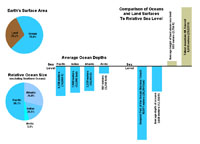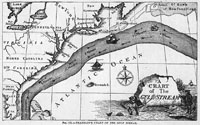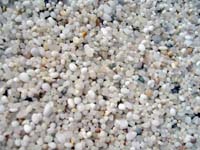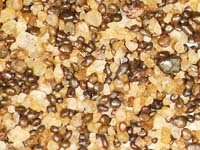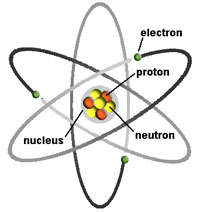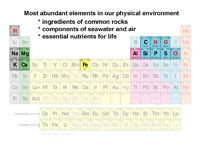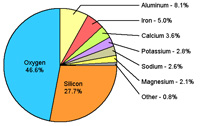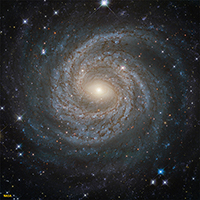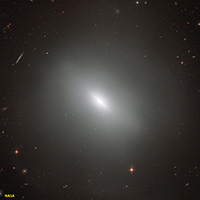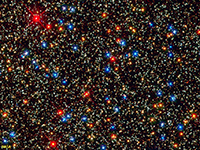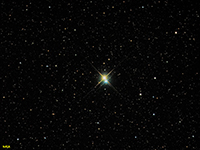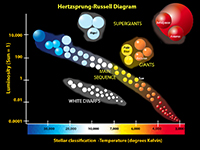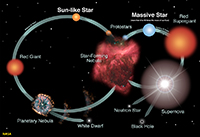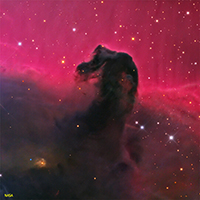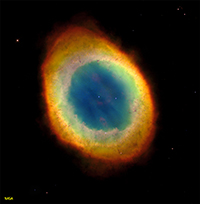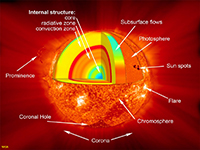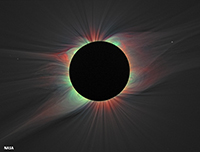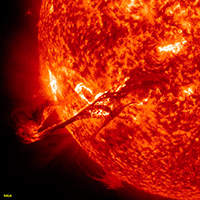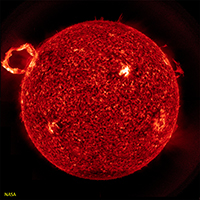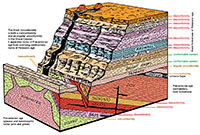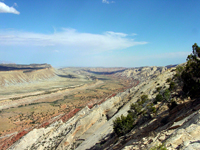 |
Oceanography 101 |
Return to class home page |
Chapter 1 - Introduction to Oceanography |
Note to students: This website is a preliminary version of an online textbook for an introductory course in Oceanography at MiraCosta College. Selected links are provided as supplemental reading for information presented in class and during field trips. Note that The content and graphic images presented here are the same used in course lectures (Power Point presentations) and will be used on quizzes and exams.
|
|
Click on images for a larger view. |
|||||||||||||||||||||||||||||||
| Fig. 1-1. Earth is an oceans planet!  Fig. 1-2. Map of the ocean basins of the world. 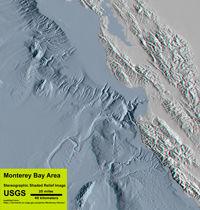 Fig. 1-3. Image of coastal and marine bathymetry and land topography of the central California region showing San Francisco Bay, Monterey Bay and Monterey Canyon offshore. Fig. 1-3. Image of coastal and marine bathymetry and land topography of the central California region showing San Francisco Bay, Monterey Bay and Monterey Canyon offshore. |
||||||||||||||||||||||||||||||||
Comparison of Ocean Basins and Continents (Figure 1-5)• Average depth about 3688 m (12,100 ft)• Deepest area of the ocean: Mariana Trench in the Pacific: 11,022 m (36,161 ft) • Average elevation of continents: 840 m (2,756 ft) • Highest mountain: Mt. Everest 8850 m (29,935 ft) See: Volumes of the World's Oceans (NOAA) |
Topography is the measurement of the elevation on land. Bathymetry is the measurement of depth of water in oceans, seas, or lakes. Both topography and bathymetry are measure relative to the global average of sea level. |
Essential Science Review Concepts for OceanographyThe following sections provide a brief overview of important concepts that are important to discussions in all subsequent chapters. These discussions are a mix of essential concepts provided in introductory courses in physical science, chemistry, biology, physics, and earth science. |
The Scientific MethodThe scientific method is how scientific ideas are tested and validated and applies to research conducted in nearly all professions (Figure 1-10). Research is conducted by individuals to groups involving multiple large public and private organizations (Figures 1-11 and 1-12).The scientific method involves: • Collection of data and observations leads to multiple hypotheses (educated guesses). • Each hypothesis is rigorously tested and it fails (rejected) or passes (and become a theory). • Tests/experiments must be thoroughly researched and accurately reported. • Tests/experiments result must be reproducible. Define science, observation, hypothesis, fact, theory, scientific law, and scientific methods. Science is the systematic knowledge of the physical or material world gained through observation and experimentation. The overall goal of science is to understand how the natural world works. The fundamental assumption of science is that the natural world behaves in a consistent and predictable manner. The scientific method involves the observation of phenomena, the formulation of a hypothesis concerning the phenomena, experimentation to demonstrate the truth or falseness of the hypothesis, and a conclusion that validates or modifies the hypothesis. Observation is the act of noting and recording something, such as a phenomenon, with instruments, in order to gain information. An example is the collection for data for temperature, oxygen levels, and pollutants in seawater at different depths in a harbor to monitor water quality for sea life protection. A fact is knowledge or information based on real occurrences; something demonstrated to exist or known to have existed. A hypothesis is a tentative explanation for an observation, phenomenon, or scientific problem that can be tested by further investigation. An example of the testable hypotheses: Observed high levels of certain types of bacteria in seawater samples from a harbor might be linked to an influx of raw sewage leaking from a nearby sewage treatment facility. A theory is a set of statements or principles devised to explain a group of facts or phenomena, especially one that has been repeatedly tested or is widely accepted and can be used to make predictions about natural phenomena. Note that in science the word theory means something far more certain and concrete than the popular use of the word, which we can define as an assumption based on limited information. Established scientific theories are based on vast amounts of information and knowledge, giving us high confidence that they are correct. |
 Fig. 1-10. The Scientific Method involves an ongoing cycle of inquiry. 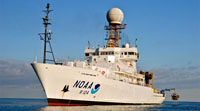 Fig. 1-11. NOAA research ship, the Ronald H. Brown, illustrates one of perhaps hundreds of vessels around the world involved in marine research and investigations. 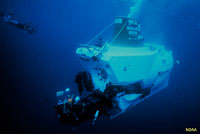 Fig. 1-12. The Alvin, a deep-sea exploration submersible. |
Making Assumptions Can Be A Dangerous Thing.An assumption is a thing or idea that is accepted as certain to happen, without proof. Misinterpreted observations can easily be used as proof or evidence in helping to establish a fact or resolve the truth of a statement. However, assumptions are often used as guiding principles in decision making when proof or facts are not resolved or accepted. Classic assumptions in history include ideas such as the Earth is flat, or the Earth is the center of the Universe. Throughout history, political, religious, economic special interests, and strongly-held societal beliefs have been used as underlying assumptions; sometimes they hold true, others are often proven wrong by new scientific evidence. The term educated guess (a hypothesis based on some related knowledge and experience, and therefore likely to be correct) may be no more than an assumption. |
Try the Scientific Method! Two Simple Exercises To Illustrate |
|||||||||||||
|
Essential Chemistry and Physics Concepts for OceanographyAspect of chemistry and physics are discussed in nearly every chapter on oceanography. Below are highlights of important concepts. |
What is Matter?Basic concepts of chemistry are essential to understanding the physical and chemical properties of matter, particularly natural earth materials (rocks, seawater, air, organic matter, etc.). The chemical characteristics of earth materials reveal information about the environments how and where they are formed, Their characteristics also determine their potential fate when exposed to chemical changes over time. For instance, rocks formed deep underground may not be stable in the surface environment where they are exposed to water, air, temperature changes, and other physical and chemical conditions.
|
|
Chemical BondsMolecular compounds are held together on an atomic level by chemical bonds. Three types of chemical bonds include ionic bonds, metallic bonds, and covalent bonds. The types of chemical bond influence the physical properties of the molecular compounds they form.Molecular compounds held together by ionic bonds are salts. An ionic bond is a chemical bond between two oppositely charged ions. Typically, metals lose valence electrons (loose electrons in their outer shell of orbiting electrons) to become positively charged cations, whereas the nonmetal accepts electrons to become negatively charged anions. For example, common salt (NaCl) has ionic bonds between sodium (Na+) has a positive charge and chlorine (Cl-) has a negative charge. Salts readily dissolve in water as their charged ions are attracted to parts of water molecules that can also have positive and negative charges. As water evaporates, the ions dissolved in water will precipitate again as salts (Figure 1-21). Natural salts like halite (NaCl) and gypsum (CaSO4) are generally soft minerals and can dissolve in water (Figure 1-22). Metals are held together by metallic bonds. Compounds with metallic bonds transmit electricity. With metallic bonds, the valence electrons disassociated from orbiting a single atom and become more of a cloud electrons that surround the positively charged nuclei of interacting metallic ions. Metalloids are intermediate between those of metals and solid nonmetals. Although most elements are metals (all those on the left and center parts of the Periodic Table), only a few elements occur naturally in metallic form including gold, platinum, copper, iron, and mercury (in liquid form). Some minerals are metalloid compounds including pyrite (FeS2), magnetite (Fe3O4), and galena (PbS)(Figure 1-23). Molecular compounds held together by covalent bonds are non-metallic compounds. Covalent bonds occur when two or more atoms share orbiting electrons, creating more stability in the valence shell of electrons between the bonding elements. These materials can form crystal complexes and do not transmit electricity and tend to be harder, more durable compounds. For instance, most gem minerals are non-metallic compounds with covalent bonds. The mineral quartz (SiO2) is a non-metallic crystalline compound with elements, silicon and oxygen, held together with covalent bonds (see Figure 1-24). Van der Waals forces (bonds) are weak, nonspecific forces between molecules and include attractions and repulsions between atoms, molecules, and surfaces. Van der Waals forces are responsible for friction and what makes water sticky. |
 Fig. 1-21. Salt crystals are held together by ionic bonds. Salt compounds dissolve in and precipitate from water. 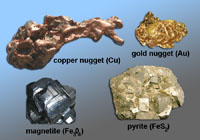 Fig. 1-23. Metallic bonds occur in metallic minerals (like native copper and gold) and metalloid minerals (like magnetite and pyrite). |
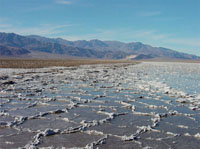 Fig. 1-22. This view shows salt crystals precipitating on a dry lakebed in Death Valley, California.  Fig. 1-24. Most minerals are non-metallic crystalline compounds held together by covalent bonds (and will not transmit electricity). [Quartz] |
Isotopes (and Radioactivity)Many elements have one or more isotopes. Isotopes are of the same element that contain equal numbers of protons but different numbers of neutrons in their nuclei, and hence differ in relative atomic mass but not in chemical properties. Some isotopes are not stable and ultimately break down or change into other elements. We call such isotopes radioactive. Many elements have both stable and radioactive isotopes. For example, the element carbon has 3 isotopes: 12C and 13C are stable, whereas 14C is unstable and will undergo radioactive decay. All there isotopes have 6 protons, but have 6, 7, and 8 neutrons, respectively.In the natural environment there are 80 different elements that have one or more isotopes. Of these, at least 254 stable isotopes that have never been observed to decay. Another 50 are radioactive. With the invention of nuclear weapons, and the numerous nuclear bomb test through the 1950s to the present, there are now many more radioactive isotopes loose in the environment. The mixing of these radionuclides in the air, water, and sediments dilute their concentrations, but also disperse them to all regions of the world. For example, the March 2011 Fukushima Daiichi nuclear disaster associated with the massive earthquake and tsunami in Japan released large amounts of radiation into the marine environment. Radiation is commonly detected and measured using a geiger counter (Figure 1-25). Note that most radiation detected on the earth surface is radiation coming in from outer space! The Earth's atmosphere shields the surface from most radiation. |
 Fig. 1-25. Radioactive elements that occur in rocks and minerals include isotopes of potassium, thorium, radium, and uranium. and may display measurable radioactivity. A geiger counter us used to measure materials for radioactivity. |
|
EnergyEnergy exists in several forms such as heat, kinetic energy (mechanical), light, potential energy, electrical, or other forms. All physical and chemical reactions involve either the loss or gain of some form of energy. Electromagnetic radiation is a kind of radiation including visible light, radio waves, gamma rays, and X-rays, in which electric and magnetic fields vary simultaneously (Figure 1-26).Electromagnetic energy from the Sun is the force behind all motion of the atmosphere and the oceans. The Sun's electromagnetic energy comes from nuclear fusion in the Sun's core. The immense pressure in the Sun's core fuses hydrogen atoms into helium atoms, a process that gives off vast amounts of energy and causes the Sun and other stars to glow. Geothermal energy is the driving force for motion within the planet (including plate tectonics, earthquakes, and volcanoes). Both solar electromagnetic energy and geothermal energy are utilized to support life and ecosystems within the marine environment. All natural materials either transmit, reflect, or absorb electromagnetic energy in different ways. Solar energy that is absorbed by the atmosphere, oceans, and land is converted to heat or other energy forms. An equivalent amount of energy is radiated back into space. Some of the energy is used to move the oceans and atmosphere, and support life in the process over time. |
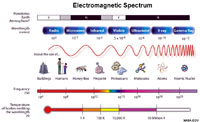 Fig 1-26. The electromagnetic spectrum is the range of wavelengths or frequencies over which electromagnetic radiation extends. |
Gravity, Mass, and DensityGravity is the weak force that attracts a body toward the center of the earth, or toward any other physical body having mass.Mass is the property of matter that measures its resistance to acceleration. Roughly, the mass of an object is a measure of the number of atoms in it. Gravity is the force that holds Earth in orbit around the Sun, and the Moon in orbit around the Earth. Mass is often confused with weight. Weight is a measure of an amount of mass under the influence of gravity. For instance, a 150 pound person on Earth would only weigh 25 pounds on the moon because the Moon only has 1/6 the gravity of Earth. Density is the ratio between mass and volume. It is a measure of how much matter an object has in a unit volume (such as cubic meter or cubic centimeter). • Density = mass/volume • Usually defined in grams per cubic centimeter - gm/cm3 Density Stratification • The earth and oceans have layers based upon density differences, they are density stratified. |
Examples of the density of earth materials : • Air ~0.1 gm/cm3 • Freshwater 1.0 gm/cm3 • Saltwater ~1.001-1.03 gm/cm3 • Surface rocks ~3 gm/cm3 • Center of earth ~16 gm/cm3 |
| Calculate the change in density when we add 1% salt to freshwater: (.99)(1.0 gm/cm3) + (0.01)(3.0 gm/cm3) = 1.02 gm/cm3 |
|
| Seawater has an average density of 1.027 gm/cm3, but this varies with temperature and salinity over a range of about 1.020 to 1.029 gm/cm3. |
Zones of the Earth Climate System |
| On any location on the planet, the slow progress of seasonal changes are related to observable migration that the path the Sun follows through the sky over the cycle of one year. Seasons occur because: a) the Earth spins (rotates) on its axis marked by the north and south poles; and, b) the axis of the spinning Earth is tilted about 23.5° relative to ecliptic plane. (The ecliptic plain flat circular path the Earth follows as it revolves around the Sun in the orbital plane)(Figures 1-27 and 1-28). Only twice a year, on the spring and fall equinoxes is the Sun directly above the equator (0°). The summer solstice occurs on June 21 when the Sun is directly overhead at noon along the latitude 23.5° north (a circle on the globe called the Tropic of Cancer). Likewise, the winter solstice occurs on December 20 when the is directly overhead at noon along the latitude 23.5° south (a circle on the globe called the Tropic of Capricorn). The tropics are the region of the world between the parallels of latitude about north (Tropic of Cancer) and 23°5ʹ south (Tropic of Capricorn) on opposite sides of the equator (0°). The term polar is used to describe the high latitude cold regions surrounding the Earth's north and south poles. The Arctic Circle runs 66.33° north of the equator. North of this line is the North Frigid Zone (also known as "The Land of the Midnight Sun" where the Sun never sets on the summer solstice). The Antarctic Circle is parallel of latitude approximately 66.33° south and defines the northern boundary of the South Frigid Zone. The Antarctic Circle marks the approximate limit south of which the Sun remains above the horizon all day on the winter solstice. The regions between the tropics and the polar regions are called temperate zones (North Temperate Zone and South Temperate Zone). |
 Fig. 1-27. Location of tropics, temperate, and polar zones.  Fig. 1-28. Seasons are caused by the tilt in Earth's axis as it orbits around the sum. |
Understanding MapsMaps are perhaps the most important tools for navigation and evaluating features on the land's surface, underwater, or even underground. Maps are used for many issues (displaying themes) such as landscape characteristics, land use and , and natural resource management (example: Figure 1-29). Maps have been used back into prehistoric times. However, the evolution of maps in the modern digital world has changed map making—enhancing their use in nearly all aspects of modern science, technology, and culture. Modern maps are created with geographic information systems (GIS). A GIS is a computer-based map-generating program that can merge geographic (spatial) information with many kinds of topical themes in database format. Such themes may consist of medical information (such as disease outbreak data), water resources, roads, buildings and civic infrastructure, power grid information, agricultural and biological information, etc.). Satellite data are increasingly used for nearly all aspects of mapping of the land, oceans, and weather patterns. |
 Fig. 1-29. Maps show thematic information in a geographic context. The theme of this map shows human migration routes on a world map base. |
Many maps display relief or elevation information . Relief relates to height and shape characteristics of a landscape (such as high relief, low, relief, gentle relief, rugged relief, etc. Shaded-relief maps show changes in elevation (topography and bathymetry) using shades of gray or color.
What are Latitude and Longitude?Locations on the Earth's surface are defined using latitude and longitude coordinate system (Figure 1-30).Latitude is the angular distance of a place north or south of the earth's equator, usually expressed in degrees and minutes. Lines of latitude are called parallels. Latitude lines parallel the Equator. Each degree of latitude is approximately 69 miles (111 kilometers) apart. Latitude in the Northern Hemisphere can be determined by sighting on the North Star (which lies directly above the North Pole) and determining the angle of the star above the horizon (subtract it from 90°). Longitude is the angular distance of a place east or west of the Prime Meridian usually expressed in degrees and minutes. In order to make an accurate map of the stars for use in ship navigation, in 1884, a location indicating the precise location of 0° East-West was designated in the cross hairs of a telescope in the Royal Observatory (now located on the grounds of the National Maritime Museum) in Greenwich England. This line marks the reference location of the Prime Meridian now used in all global mapping (including GPS location systems). The International Date Line is on the opposite side of the earth located 180° east or west of the Prime Meridian. A meridian is a circle of constant longitude passing through a given place on the earth's surface and the terrestrial poles. Longitude lines (of equal spacing measured in degrees) are widely spaced at the equator but converge at point at the North and South Poles. The Prime Meridian is designated 0° (zero degrees). Meridian lines east of the Prime Meridian are designated positive values (0° to 180° east); whereas meridian lines west of the Prime Meridian are designated negative values (-0° to -180°). At 180° east or west is the International Date Line. A degree of longitude is widest at the equator at 69.172 miles (111.321) and gradually shrinks to zero at the poles. At 40° north or south the distance between a degree of longitude is 53 miles (85 km). Defining locations with a latitude-longitude coordinate system—any location on the planet surface can be defined by a number in degrees, minutes, and seconds north or south of the Equator and east or west of the Prime Meridian. (Compare to hours, minutes, seconds on a clock!)
A Global Positioning System (GPS) is a space-based global navigation satellite system that provides reliable location and time information in all weather and at all times and anywhere on or near the Earth when and where there is an unobstructed line of sight to four or more GPS satellites (Figure 1-35). GPS is now used for nearly all forms of digital map navigation. |
 Fig. 1-30. Longitude and Latitude projected on a globe |
|||||||
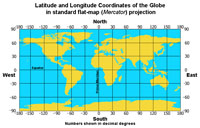 Fig. 1-31. Map of the world showing latitude and longitude in a Mercator (flat) projection |
||||||||
 Fig. 1-32. Map of world showing with Mercator Projection - notice distortion in high latitudes because longitude lines are not converging. |
||||||||
 Fig. 1-33. Map of North America with Lambert Conic Projection - on this scale distortion of America is minimal, but look at South America. |
||||||||
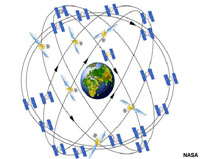 Fig. 1-35. Satellite network of the Global Positioning System. |
||||||||
Geologic Time ScaleGeological time refers to the time of the physical formation and development of the Earth (especially prior to human history). Geologic time also applies to the age and history of the Universe. Geologists have subdivided periods in Earth's history is measured periods spanning millions or billions of years. The Geologic Time Scale has been established to name segments of time periods to help define the chronology of events (such as mountain range formation), the formation of rock units (such as the age of a lava flow), the age of fossils, organizing geologic map units, and other purposes. Figure 1-30 is a standard geologic time scale listing names of major time periods with time span information. Names of geologic time periods (like Late Cretaceous or Pleistocene) are used for organizing geologic map units, charting the age or petroleum-bearing rock layers underground, and perhaps hundreds of other purposes. Figure 31 is a graphic representation of the lengths of the different named geologic time periods (named in Figure 1-30) relative to span of a 24 hour day.College courses in historical geology examine what is currently known about the age of the Earth and the events as they are known or inferred to have occurred. For this course, the name of geologic time periods are used to explain the age of when rocks or sedimentary deposits formed, and where and how they occur in relation to other rocks and deposits associated with them. For example, rock layers containing dinosaur bones will correlate to the specific time period that the dinosaurs lived in the geologic past. Every rock has a history! The geologic time scale used today has evolved through the past two centuries as new scientific discoveries have been made and new technologies for dating the age of earth materials have become available. The most recent version of the geologic time scale is released on a Geological Society of America website as updated versions become available. Note that the notions that the Earth being old (measured in billions of years) has not been all that popular with some religious groups throughout the ages. The primary arguments about the age of the Earth and the observable universe have been resolved by the global scientific community, but paradigms have ways of shifting as new discoveries are made and new information becomes available, and those ideas are tested by scientific methods. Vast periods of time in earth history are fundamental parts of understanding biological evolution of life on earth (paleontology), understanding genetics, particularly related to human evolution, and in astronomy explaining the vastness and age of the observable universe. Fossils are traces or remains of prehistoric life now preserved in rock. • Paleontology: study of fossils • Fossils are mostly found in sedimentary rocks • Where found, fossils aid in interpretation of the geologic, geographic, and environmental past • Fossils serve as important time indicators • Fossils allow for correlation of rocks from different places |
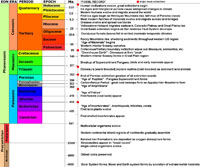 Fig. 1-30. Geologic Time Scale showing major geologic events in Earth history and the evolution of life on earth. New scientific discoveries are refining knowledge about the chronology and impacts or significance of events through deep Earth time. 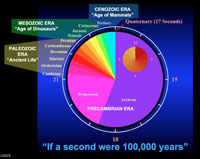 Fig. 1-31. If a second were 100,000 years - this classic diagram shows the distribution of different ages of time as if it were all squeezed into a 24 hour day. All of human history would fit in the last fraction of a second! |
Earth's Place in the UniverseMany aspects of astronomy have contributed to the knowledge of the origin and geologic history of planet Earth. Meteorites have been found, collected, and studied for centuries. Telescopes on the ground and now in space, satellites, robotic and manned missions to space, the Moon, and other planets and moons in our Solar System objects have greatly expanded the collective knowledge about the origin of our planet and objects in the Solar System—all of which have evolved to their current state over billions of years (Figure 1-32). So far, life is only known to exist on Earth, but it could possibly exist elsewhere, even within our Solar System. We just haven't proven it yet.Discoveries Leading To Modern AstronomyClaudius Ptolemaeus (~100-170 CE), also know simply as Ptolemy, was an Egyptian astronomer, geographer, and mathematician (of Greek descent) who became well known in the Alexandria philosophical community in the 2nd century. Although Ptolemy made a variety of important, if not interesting, contributions to knowledge of his times, perhaps his most significant, and long lasting, was his observations of the orbits of planets and constellations. He promoted the geocentric model, that Earth was the center of the observable Universe. The ancient Greek, Roman, and Muslim astronomers followed the geocentric model (or Ptolemaic system) that described the Universe with the Earth at its center. |
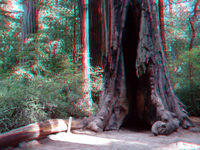 Fig. 1-32. Like this giant redwood in Big Basin State Park, California. All physical materials, including life on Earth, have an origin connected to the formation of elements that formed from events that happened in space many billions of years ago! |
Early Astronomers: Copernicus, Galileo, Kepler, and NewtonThe geocentric model wasn't seriously challenged until Nicolas Copernicus who published a report in 1543 suggesting that the Sun, not the Earth, was the center of the Universe (called Copernican heliocentrism). Nicolaus Copernicus (1473-1543) was the first to explain the observed retrograde, looping phenomena of planet motion by replacing previously held theories of geocentrism (Earth being the center of the Universe) with heliocentrism (the Sun being the center of the observable Universe).However, the Copernican system was also discovered to be flawed as telescopes were developed to see farther into space and astronomers began to grasp the immense scale of time and distance between our Solar System and other objects in our Milky Way Galaxy and the Universe beyond. Italian physicist and astronomer, Galileo Galilei (1564-1642) used an early telescope and discovered four large moons of Jupiter (Figure 1-33). He also promoted the Heliocentrism Theory that the Sun, not the Earth, was the center of our Solar System. In 1615 he was subjected to the Roman Inquisition for his scientific inquiries. He was forced to publicly recant his beliefs and subjected to house arrest for the remainder of his life. (Note that the Roman Catholic Church eventually accepted his theory and officially forgave him in 1992!) |
 Fig. 1-33. Galileo Galilei first used a telescope to examine the night sky. |
GravityGravity is a weak but measurable force, but becomes observable when dealing with objects on the scale of moons, planets, and satellites launched into space. Understanding the very mysterious force of gravity is fundamental to characterizing the mechanics of the orbits of planets and moons within the Solar System (and objects moving throughout the universe). Using research by earlier astronomers, between 1609 and 1619, Johannes Kepler presented scientific laws that describe to character of the elliptical motion of planets around the sun. Isaac Newton used Kepler's laws to mathematically resolve the nature of gravity which he presented in 1687 as his Law of Universal Gravitation which states "a particle attracts every other particle in the Universe using a force that is directly proportional to the product of their masses, and inversely proportional to the square of the distance between them" (Figure 1-34). Gravity is a weak but measurable force, but becomes observable when dealing with objects on the scale of moons, planets, and satellites launched into space. |
 Fig. 1-34. Newton's Law of Universal Gravitation. |
Determining the Expanse of SpaceFrom the time of Galileo to the beginning of the 20th century, the telescope technology advanced, and the night sky with it stars, planets, gas and dust clouds (nebula), and other objects were charted in great detail. The problem was that we could see lots of stars, but had no way of knowing how far away there were because stars vary in their brightness in addition to their distance. Astronomers have developed several methods to directly or indirectly measure the distance to object is space.It was in 1923 that Edwin Hubble found dozens of uniquely identifiable variable stars in the Andromeda nebula and then determined that Andromeda was at least 10 time more distant than the most distant stars in the Milky Way. He was first to determine that Andromeda was a separate system which he named a galaxy. The Milky Way is an obvious band of densely distributed stars and clouds of dust visible as a band in the clear night sky (Figure 1-35). Before Hubble's discovery, it was thought to be the Milky Way represented the entire Universe, and that unusual shaped spiral nebulae (galaxies) were part of the Milky Way. With Hubble's discovery, it became evident that Earth and the Sun's Solar System was within the greater Milky Way Galaxy. |
 Fig. 1-35. The Milky Way as photographed on a clear night sky. The Milky Way is the main plane of the galaxy where stars are concentrated. |
The Andromeda Galaxy is a spiral galaxy (Figure 1-36). It is the closest large galaxy to our Milky Way Galaxy and is one of the few visible to the naked eye. It is the most distant object in space that can be seen without magnification. The Andromeda Galaxy can be seen in the northern hemisphere on clear autumn nights. It is located about 2.25 million light-years away from Earth. (A light year is the astronomical distance that light can travel in a year; approximately about 9.4607 x 1012 kilometers or about 6 trillion miles.) Andromeda is estimated to contain about 1 trillion stars. Astronomers estimate that the Milky Way and Andromeda galaxies will eventually collide (merge) in about 4.5 billion years in the future. |
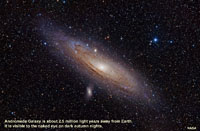 Fig. 1-36. Andromeda Galaxy |
GalaxiesA galaxy is a system of millions to trillions of stars, together with gas and dust, held together by gravitational attraction. Deep-space observing telescopes show distant field of galaxies—galaxies and clusters of galaxies can be seen in all directions in distant space. The distance to these objects are in the range of thousands to billions of light years away from Earth. Figure 1-37 shows a field of galaxies observed in on small region in deep space. Using images like this, astronomers estimate there may be 100 billion galaxies within the Observable Universe. Galaxies appear as many shapes and sizes, but there are three general classes: spiral, elliptical, and irregular galaxies, but each of these groups are subdivided into classes (Figures 1-38 to 1-40). Small elliptical galaxies are the most common, and unlike spiral galaxies their stars do not seem to revolve around their galactic centers in an organized way. The galactic center is where the greatest mass and concentration of stars exist in a galaxy. Irregular galaxies take on many shapes, and many are interpreted as galaxies that have collided or merged under gravitational attraction. |
Earth's Place In the Observable Universe
|
 Fig. 1-41. Earth's place in the Observable Universe. |
The Big Bang TheoryIn the 1927, a French astronomer, Georges Lemaître, proposed the idea that in the distant past that the Universe started as just a single point in space, and as the Universe has been expanded as a great explosion to what is observable now. Two years later in 1929, Edwin Hubble reported that the most distant observable galaxies are moving away at a faster rate than ones closer to Earth. This observation, and much other evidence, now supports a Big Bang Theory.The Big Bang Theory is a cosmological theory holding that the Observable Universe originated approximately 13.8 billion years ago from the violent explosion of a very small agglomeration of material of extremely high density and temperature (Figure 1-42). Current scientific though is that originally the material ejected from the Big Bang was too hot for subatomic particles with measurable mass to exist. It was probably many thousands of years after the Big Bang that it got cool enough for sub atomic particles and then atoms to form, and that gravitational attraction could influence the newly forming matter. Early in the history of the Universe matter began to condense and with time gravitation attraction pulled materials together to form galaxies. In 2016, the Hubble Space Telescope was able to capture an image of the furthest distant galaxy known, estimated at about 13.4 billion light years away from Earth. What is beyond the Observable Universe is unknown. See a NASA website about the Big Bang Theory. |
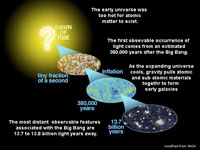 Fig. 1-42. A very brief story of the Big Bang and the evolution of the Observable Universe over an estimated 13.8 billion years. |
StarsA star is a self-luminous celestial body consisting of a mass of gas held together by its own gravity. Stars exist in a balance—their internal energy generated by nuclear fusion reactions results in an outflow of energy to the star's surface. This outward flow of directed gas and radiation pressures is balanced by the inward-directed gravitational forces. Since ancient times, astronomers have been charting stars into constellations—recognizable grouping of starts that appear in the night sky and move with the seasons as the Earth orbits the Sun (Figure 1-43). Although stars in constellation often appear in association by appearance, they may be large distances apart and very greatly in brightness (intensity). In addition, stars exist in a wide range of colors and sizes, most obvious when observed through telescopes or from space (Figure 1-44). Many stars are clustered together, often sharing a common stellar history (Figure 1-45). Some stars orbit each other relatively close to one another as binary systems (Figure 1-46). Some star systems have multiples stars in orbit around each other. Among the millions of stars observable in our galaxy, astronomers have been classifying them by size, color, and brightness (intensity) . Most stars in our galaxy fall into a class called the main sequence of which our Sun belongs (Figure 1-47). Astronomers have developed theories about star formation and the life cycle of stars in their different classes. With years of observation, abundance of knowledge has been gained about the life cycle of stars (Figure 1-48). Life Cycle of StarsStars form in giant molecular clouds called nebula. A nebula is an interstellar cloud within a galaxy consisting of gas and dust, typically glowing from radiant energy from stars nearby within them (Figures 1-49 to 1-54). Nebulae are the birth place of both stars and other objects within solar systems. Nebula can form from the explosion of stars at the end of their life cycle, resulting the creation of a new generation of stars and solar systems. As stars form, gravity draws material in (mostly gas) and it mass increases until the internal heat and pressure is enough to start nuclear fusion reactions (converting hydrogen into helium). As stars age, they consume their fuel and eventually run out of nuclear fuel. Stars like the Sun may take billions of years to consume their nuclear fuel. When the fuel runs out, stars collapse under the weight of their own gravity. However, the fate of a star depends upon its mass. Stars up to about seven times the mass of the sun fall within the "main sequence" grouping of stars. These go through stages as they consume their fuel. Young stars fuse hydrogen into helium. When stars run out of their hydrogen, the force of gravity causes them to collapse, which increases the heat and pressure within its core. During this phase of a star's life it will expand and become a red giant. Once the helium in the core of a star is consumed, stars in the main sequence will shed much of their mass into space (creating nebula), and the remaining core will shrink and cool and shrink to become a hot remnant called a white dwarf. Fate of Supergiant StarsStars with masses greater than about seven times the mass of the Sun experience a more spectacular fate. More massive stars will burn through their fuel much faster than stars of the main sequence because their cores are hotter and under greater pressure. One these massive stars burn through their hydrogen and helium, this increase in heat and pressure allows fusion to convert helium into carbon, then carbon into neon, and then into iron. As the star continues to burn through it's fuel it eventually shuts down because it the fusion process of creating iron actually consumes more energy than it produces and the star looses it balance and collapses under it own gravity. The collapsing core reaches temperatures in the range of 100 billion degree and the core recoils as a massive explosion called a nova. Great star collapses produce supernova where a star may shed the majority of it mass into space. What happens to the core depends on the mass of the star. Stars about 7 to 20 times the mass of the Sun produce massively dense objects called neutron stars (their density is so great that electrons and protons collapse to form a great mass of neutrons). Stars with masses greater than about 20 times the mass of the Sun collapse to form black holes. Black holes of so dense that their gravity prevents light from escaping from within their "event horizons" where matter is pulled into an inner space where nothing escapes. |
|
|
The Solar SystemThe Solar System is the system containing the Sun and the bodies held in its gravitational field, including the planets (Mercury, Venus, Earth, Mars, Jupiter, Saturn, Uranus, Neptune), planetary moons, the asteroids, comets, and other interstellar bodies and matter (Figure 1-55).Most planets and planet systems (planets with orbiting moons) orbit the Sun in the ecliptic plane—an imaginary plain containing the Earth's and other planets' orbit around the Sun. |
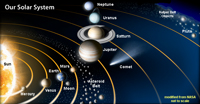 Fig. 1-55. Our Solar System originated from gas, dust, and other matter that gravity pulled together in a stellar nebula about 5 billion years ago. |
|
The SunThe Sun is the star at the heart of our Solar System (Figure 1-56). The sun's intense solar energy and gravity influences the planets throughout the Solar System and beyond. Facts about the Sun include:• By mass, the Sun is composed of hydrogen (70.6%) and helium (27.4%), all other elements are trace by comparison. • The Sun's average diameter is about 864,000 miles (about 109 times the size of Earth). The Sun' mass is about 333,000 times the mass of Earth. The average density of the Sun is 1.409 grams/cm3 (compared with Earth which is 5.51 grams/cm3). • The Sun rotates on its axis in an unusual way. The rotation period at the Sun's equator is about 27 days, but is about 36 days at it poles. |
 Fig. 1-56. The Sun (our star), is one of billions of stars in our Milky Way Galaxy. |
Structure of the SunThe Sun's internal structure is inferred to be subdivided into several zones (Figure 1-57).• Core—The internal temperature of the Sun's is estimated to be about 27 million degrees Fahrenheit, hot enough to drive the nuclear fusion process of converting elemental hydrogen into helium, the source of solar energy. • Radiative zone—Above the core where fusion occurs, slowly radiates upward through the massive radiative zone. • Convection zone—The temperature is estimated to drop to about 3.5 million degrees Fahrenheit, where convection of "great bubbles of dense plasma (ionized matter) rise toward the surface in a convective manner (like a pot of boiling soup). • Photosphere—A 300 mile thick layer of hot gas makes up the surface of the Sun where most of the Sun's energy radiates into space. The Sun's surface temperature is about 10,000 degrees Fahrenheit, hot enough to radiate solar energy in the visible light spectrum. • Chromosphere and Corona—The outermost layer of the Sun is a thin solar atmosphere (the chromosphere) which extends as streaming plasma deep into space (the corona). The region is not a hot as the underlying photosphere, but is heavily influence by magnetic forces generated deeper in the Sun. Features of the chromosphere are only visible with special sun-observing telescopes. However, the corona is visible during solar eclipses when the disk of the Moon's shadow temporarily blocks the intense light form the photosphere (Figure 1-58). |
|
Sunspots and Coronal Mass EjectionsSunspots are relatively dark patches that appear temporarily on the Sun's photosphere (Figures 1-59 and 1-60). Sunspots are cause by a flux in magnetic fields that appear to inhibit convection. Sunspots usually occur in pairs, like the two ends of a U-shaped magnet. Sunspots last a few days to a few months before they dissipate. The concentration of sunspots on the solar surface tend to follow an 11 year cycle that also flows a small variation is the total amount of solar energy output. Coronal mass ejections are unusually large eruptions of streaming plasma and radiation (composed of charged particles) under the influence of solar magnetism. Eruptions result in the formation of solar flares and prominences (arching flares) that erupt from the Sun's surface (Figures 1-61 and 1-62). |
|
The Solar WindThe solar wind is a stream of energized, charged particles (mostly electrons and protons) flowing outward from the Sun's upper atmosphere. The ionized particles are released into space from the Sun's corona and by coronal mass ejections (prominences and flares). The solar wind moves through solar system at speeds roughly 500 miles per second (800 km/sec); (about 10 days from Sun to Earth) and can reach temperatures of about 1 million degrees (Celsius). The solar wind is what blows a tail away from the bodies of comets as they go through the solar system. Estimates suggest the Sun loses the equivalent of one Earth mass about every 150 million years (which isn't much considering the size of the Sun). Large corona mass ejections from the Sun’s surface result in solar storms that frequently impact Earth and other planets.The Earth’s magnetic field shields the planet from the erosive effects of the solar wind (Figure 1-63). Particles trapped by Earth’s magnetic field flow into the upper atmosphere producing the aurora borealis (Northern Lights) and aurora australis (Southern Lights) (Figure 1-64). Over geologic time, the solar wind also erodes the atmosphere of planets with weak magnetic fields (this includes Mercury, Mars, and the Moon). Strong auroras have been observed on the gas planets (Jupiter, Saturn, Uranus, and Neptune)—all of which have a dense atmosphere and a strong magnetic field. Solar storms associated with coronal mass ejections can interfere with radio communications, cause damage to satellites, and impact electrical transmission lines and facilities (resulting in power outages). During strong solar storms long lines of metal (like electrical power lines, pipelines, and railroad lines in northern regions can overload with electrical charges which and spark to nearby objects and have been reported to have started brush fires. Because massive solar ejections can be observed, the possible impacts of solar storms can be predicted. |
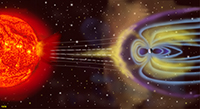 Fig. 1-63. Coronal mass ejections result in the solar wind which is deflected and captured by the Earth's magnetic field. Fig. 1-63. Coronal mass ejections result in the solar wind which is deflected and captured by the Earth's magnetic field. Fig. 1-64. The aurora borealis are streaming light displays in the northern hemisphere. Fig. 1-64. The aurora borealis are streaming light displays in the northern hemisphere. |
Planets and Planetary Systems of the Solar SystemA planet is a large spherical celestial body moving in an elliptical orbit around a star. A planetary system is a set of gravitationally bound celestial objects in orbit around a star or star system. Planets with orbiting moons are planetary systems. The Solar System consists of four inner rocky planets (Figures 1-65 to 1-68), four outer gas planets (Figures 1-69 to 1-72), and orbiting belts of asteroids, comets, planetesimals, and other objects under the gravitation influence of the Sun.
|
||||||||||||||||||||||||||||||||
Earth's MoonEarth's Moon is the fifth largest of at least 168 known moons orbiting planets in the Solar System (Figure 1-73). The Moon lacks an atmosphere, and does not display any active geologic activity (such as earthquakes or volcanic eruptions). Like Earth, the Moon has a core, mantle, and a crust; geophysical data suggest the part of the Moon's core and mantle may be molten. The lack of atmosphere has helped to preserve geologic features that date back to early stages in the formation of the Solar System. |
 Fig. 1-73. The Moon Fig. 1-73. The Moon moon radius: 1,079 miles (1,736 km) orbital period: 27 days average distance from Earth: 238,855 miles (383,300 km). gravity: 1.622 m/s2 |
Asteroids and CometsAn asteroid is any of the thousands of small irregularly shaped bodies of stone, metal, and ice that revolve about the sun. In our Solar System, asteroids typically range in size from about one-mile (1.6 km) to about 480 miles (775 km) in diameter (Figure 1-74). Most asteroids orbit the Sun in the Asteroid Belt located between Mars and Jupiter. However many large objects have been observed passing through Earth's orbital path. Asteroid collisions with Earth were frequent in Earth's early history, but are now extremely rare events. The extinction of the dinosaurs and many other species is mostly blamed on the environmental catastrophe created by an asteroid impact about 65 million years ago, defining the end of the Cretaceous Period (and Mesozoic Era).A comet is a celestial body thought to consist chiefly of if ices of ammonia, methane, carbon dioxide, and water, and dust (Figure 1-75). Comets are observed only in that part of its orbit that is relatively close to the sun, having a head consisting of a solid nucleus surrounded by a nebulous cloud of gas and debris (a coma) up to 2.4 million kilometers (1.5 million miles) in diameter. The coma turns into an elongated curved vapor tail arising from the coma when sufficiently close to the sun. There may be more than 100 million comets in the outer Solar System. A meteor is a bright trail or streak that appears in the sky when a meteoroid is heated to incandescence by friction with the earth's atmosphere. A meteorite is a stony or metallic mass of matter that has fallen to the Earth's surface from outer space (Figure 1-76). |
 Fig. 1-74. Asteroids are solid objects in space consisting mostly of rock, dust, some metals, and possibly ice.  Fig. 1-75. Comets are like asteroids (mostly frozen gases and ice, dust, some rocky material) that leave a trail of material as they are heated as they approach the sun. |
 Fig. 1-76. An iron-nickel meteorite is magnetic. 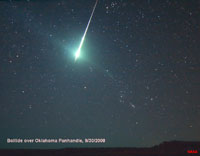 Fig. 1-77. Bolide (meteor fireball) over Oklahoma Panhandle, 9/30 2008 |
| A bolide is a large meteor (or asteroid or comet) that explodes in the atmosphere (Figures 1-77 and 1-78). About a dozen significant (recorded) bolide events happen each year. A recent bolide explosion involved the Chelyabinsk meteor that blew up over Russia on February 15, 2013. The explosion occurred high in the atmosphere, but the atmospheric shock wave blew out windows, doors, and injured over a thousand people on the ground (see YouTube video). An atrobleme is an eroded remnant of a large crater made by the impact of a comet or asteroid (large meteorite). Because of weathering and erosion processes, impact craters are relatively short lived on the Earth's surface (with exceptions for large impacts or in arid regions). Currently there are almost 200 known craters distributed on all continents. Others have been discovered by oil drilling through sedimentary cover. |
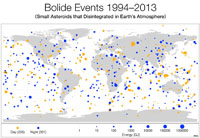 Fig. 1-78. Map of reported bolide events 1994-2013. |
| Can you explain why are there so many craters on the surface of the Moon but not on surface of the Earth? | |
The Outer Solar SystemThe region beyond to orbit of Neptune is called the Kuiper Belt. It is the circumstellar disc at the outer margin of the Solar System beyond the planets. It is similar to the Asteroid Belt, but far larger (wider) and many times more massive. The belt extends from Neptune (at about 30 AU [astronomical units] to about 50 AU - one AU is the average distance of the center of the Earth to the center of the Sun.There are more than 100,000 Kuiper Belt Objects (KBO). The Kuiper Belt includes three recognized planetesimals (or dwarf planets) including Pluto, Haumea, and Makmake. KBOs are probably mostly composed of frozen volatile compounds (ices of methane, ammonia, and water). Pluto's status as a planet has been argued for years - Figure 1-79. Pluto does not behave like other planets; it does not orbit the Sun within the ecliptic plane, and sometimes Pluto's orbit puts it closer to the sun than Neptune.) The region affected by the flow of material from the Sun (solar wind) and its magnetic field is called the heliopause. Beyond the heliopause is interstellar space (a distance of about 12,161,300,000 miles from the Sun; discovered by the Voyager 1 spacecraft). Beyond the Kuiper Belt is the hypothetical Oort Cloud - a region that may contain an abundance of icy planetesimals and objects that may surround the Solar System at a distance of between 50,00 and 200,000 AU. The Oort Cloud may be the source of most of the long-period comets that have been observed. It may even contain planet-sized objects yet to be discovered. |
 Fig. 1-79. Pluto was formerly classed as a planet, but now it is called a planetesimal, or a dwarf planet in the Kuiper Belt. Pluto has 5 moons. |
Nebular Hypothesis of the Origin of the Solar SystemMany billions of years before the formation of the Solar System there were probably several generations of star formation and destruction occurred in our region of the Milky Way. Ancient supernova explosions in the distant past produced the elements we observe in our Solar System today (an example of a fairly recent supernova explosion is shown in Figure 1-80). Nuclear fusion in stars coverts hydrogen into helium and other elements up to the atomic mass of iron. Elements heavier than iron are only created by intense energy in supernova explosions. Gas, dust, and other matter from previous supernova explosions became part of a nebula (Figures 1-81). Gravity gradually condenses material in nebulae into new star systems (see example in Figure 1-82).An ancient nebula in the Milky Way Galaxy was the birthplace of our Sun and Solar System. Currents of material (gases, dust, asteroids, etc.) under the influence of gravity consolidated into the proto suns and proto planets of new star systems within the nebula, one of which became our Sun and Solar System. Because all matter is influenced by gravity, matter within nebulae gradually is pulled toward areas with more matter. As matter moves toward a location with greater density it may be caught in a spinning current around a center of accumulating matter that may become a sun or a planet. • The combination of gravity and spin results in the formation of a flat, disk-shaped stellar cloud with the Proto Sun (or pre Sun) at the center. The increasing mass and gravity of the Sun grabs most of the matter in the evolving Solar System. The evolution of the solar system is generally illustrated in Figure 1-83. It is inferred as follows: • The Sun eventually gains enough mass that nuclear fusion can begin, creating the intense energy that it radiates into space. • The massive release of energy from the new Sun heats the surrounding stellar region, combined with the force of high energy plasma (the solar wind) pushes the light elements (mostly hydrogen and helium) out of the inner Solar System region. As a result: • Inner planets form from the accumulation mostly of metallic and rocky substances (dust). Lighter gas materials are pushed to the outer regions of the Solar System. • Larger planets in the outer part of the Solar System began forming from gases (mostly hydrogen) and fragments of ice (H2O, CO2, and other gases). • The Sun and its Solar System gradually formed by the gravitational attraction of materials within a stellar nebula beginning almost 5 billion years ago. • The evolving Solar System assumes a flat, disk shape of condensing gases and dust with the Proto Sun (or pre Sun) at the center. The consolidation of matter under gravitational attraction causes the surrounding nebular cloud to flatten and spin. • After solar ignition (initiation of the Sun's internal nuclear fusion reactions), the Sun's intense solar energy and solar wind begins to drive gases away from the inner Solar System. • Inner planets begin to form from metallic and rocky substances (dust). • Larger outer planets began forming from fragments of ice (H2O, CO2, and others). Proto-Earth FormedStudies of meteorites and samples from the Moon suggest that the Sun and our Solar System (including proto-planets) condensed and formed in a nebula before or about 4.56 billion years ago. A recent Scientific American article places the current assumed age of the Earth is about 4.56 billion years old. Currently, the oldest samples of Early Earth rock samples from the Jack Hills region of Australia that contain crystals of the mineral zircon dated to an age of about 4.4 billion years.Earth also formed through gravitational attraction of interstellar dust, gases, small asteroids and larger objects (planetesimals) within the early Solar System consolidating within the Sun's stellar nebula and within its orbital belt around the Sun. • Initially, the Earth was probably homogeneous in composition, eventually becoming extremely hot and mostly molten within. • Proto-Earth was probably under constant bombardment by asteroids, comets, and planetary dusts and debris. • Current thought is that the Proto-Earth grew to a larger in size than today’s Earth. Formation of the Earth-Moon SystemProto-Earth experienced a great planetary collision resulting in formation of the Moon.Studies of the rocks brought back from the Apollo Missions show that the Earth and Moon have similar mineral and isotopic compositions. Such an impact probably vaporized much of the upper portion of the Proto-Earth, throwing much of it into space. Gravity eventually consolidated the material into the Earth-Moon system. This, and the fact that the Earth has a tilted axis, and the Moon's orbit is not in the ecliptic plane, suggest that the Moon may have formed from the collision of another small planet-sized object with the Earth early in the history of the Solar System (Figure 1-84). It is this tilt to Earth's axis that gives rise to the seasons as it orbits the Sun. The Moon's surface displays a heavily cratered surface, many of the craters are massive in scale. Dark-colored maria are regions on the lunar surface where molten material flooded the surface, filling in depressions created by massive impacts. The lighter-colored highland regions on the Moon are rugged mountainous regions consisting of heavily cratered moonscapes and tectonic features that formed early in the Moon's history when the mantle was more molten and lighter material floated to the surface to crystallize and form the lunar crust. The cratering was a result of asteroids and comets collisions, mostly within the first billion years of the Moon's history. |
 Fig. 1-80. Supernovas are great explosions that partial to complete demolish aging stars, releasing new matter and gas to create a new generation of stars.  Fig. 1-81. Nebula, the birthplace of stars; some are formed from the explosion of other more ancient stars, some thousands to millions time larger than the Sun. 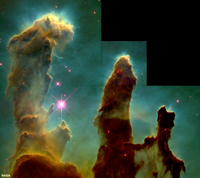 Fig. 1-82. Pillars of Creation, a part of Eagle Nebula in our Milky Way Galaxy where new stars are forming and emerging from a gas and dust cloud—a stellar nursery.  Fig. 1-83. A brief explanation of how the Solar System came to be through the process of stellar evolution.  Fig. 1-84. Proto Earth colliding with another object. Earth's seasons and lunar orbit are evidence today that this event occurred long ago. |
Evolution of Earth’s Layered StructureEarth has a layered structure, having an outer rocky crust and mantle overlying a molten and solid metal core, however, this internal layered arrangement did not exist early in Earth's history (Figure 1-85).• Early in Earth's history the composition of the planet was probably more homogeneous. However, just like oil and water don't mix, metals separated from non-metal substances, and as metals are denser, gravitation forced them to sink toward the planet's core. • Likewise, molten material rich in dissolved gases and lighter silica-rich matter is less dense and over time it gradually migrated upward accumulating in the mantle and thin crust where some of it reached the surface, resulting in volcanism and massive degassing. • Despite intense asteroid bombardment, early crust began to form. • Chemical segregation under the influence of gravity established the basic divisions of Earth’s interior (core, mantle, and crust). This process also happened with other planets, moons, and planetesimals in the Solar System. |
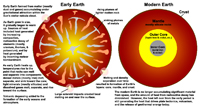 Fig. 1-85. Formation of the early Earth and the eventual development of its internal layered structure: core, mantle, and crust. Volcanic degassing and accumulating gases from space led to the formation of Earth's atmosphere and oceans. |
|
Origin of Earth's Atmosphere and OceansThe study of meteorites and material in space suggest the early Earth probably had large quantities of water, organic compounds, and other gases trapped in the accumulating material forming the planet. As a result, as rocks melted large amounts of volcanic outgassing took place. This volcanic outgassing contributed to the atmosphere forming around the planet. Volcanic outgassing from the Earth's interior is still taking place as illustrated by gas emissions from volcanic eruptions such as those on Hawaii or on Iceland where the source of molten material is known to be rising to the surface from the mantle (Figure 1-86).• Current thought is tat large volumes of water vapor and carbon dioxide formed Earth's primitive atmosphere. The atmosphere was also rich in nitrogen, methane, and ammonia. • Early in Earth history the Earth probably had a thick, hot atmosphere. The surface of the planet was probably hotter than the boiling point of water, so much of the planet's water was trapped as water vapor in the atmosphere. • Early on, no continents or oceans probably existed (at least no trace of them are preserved from that time), and no evidence of life on Proto-Earth has been discovered. • Eventually the surface cooled enough for early crust to began to form. With a solid crust and reduced surface temperatures, rainfall could begin to accumulate in depression on the surface. As more and more water was released from the atmosphere oceans began to form. • By about 4 billion years ago (BYA) the Earth's oceans were essentially in place. Oldest rocks from Canada are of this age. • Nearly 2 billion years ago, life had advance enough for photosynthesis to take place, gradually consuming the vast reservoirs of carbon dioxide in the atmosphere and dissolved in the oceans, while releasing oxygen to accumulate in the atmosphere (discussed in Chapter 2). |
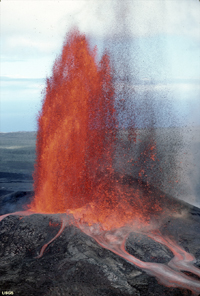 Fig. 1-86. Volcanic outgassing of the interior of the planet is still taking place, as illustrated by volcanic eruptions on Hawaii. |
|
Basic Geologic PrinciplesSome basic geologic concepts are helpful for explaining the origin of rocks that formed in ocean basins or are observable in rocky outcrops along coastlines. Rocks form in many ways, and because the Earth is so old, rocks that may have formed in one location may have been altered or moved long distances from its place of origin. |
What Are Minerals? What Are Their Significance?A mineral is a naturally occurring, inorganic (never living) solid with a definite internal arrangement of atoms (crystal structure) and has a chemical formula
that only varies over a limited range that does not alter the crystal structure. What Is the Difference Between a Rock and a Mineral?A rock is a relatively hard, naturally formed aggregate of mineral matter or petrified matter. Rocks are mixtures and may consist of one or more minerals, but may include organic matter and other non-mineral substances, such as gases and water. Rocks are what makes up the materials of the solid Earth and other rocky planets and moons in the Solar System. The word stone is another common term used to describe rock.Rocks consist of one or more minerals. Figure 1-88 shows how minerals can be combined to form different kinds of rocks that form under different environmental conditions. The mineral composition of a rock reflects the physical environment and geologic history where a rock formed. Rock form in a variety of geologic setting ranging from locations on or near the earth surface, deep underground, or even in outer space. Most of the rocks we see on the surface of our planet formed by processes that happened long ago. However, we can see these processes that form rocks actively taking place in many places today. Rapid rock formation can be seen happening such as lava cooling from a volcanic eruption in places like Hawaii or Iceland. However, most rocks we see around us form very slowly in settings that may not be visible on the land's surface. Slow processes creating rocks can be inferred by observing reefs growing and accumulating in the oceans, or sediments being carried by flowing water in streams or moved by waves crashing on beaches. We can see sediments being deposited, but we cannot see them turning into stone because the process may take thousand or even millions of years. The mineral composition of a rock reflects the physical environment and geologic history where a rock formed. |
 Fig. 1-87. Common rock-forming minerals are the most abundant minerals found on our planet Earth. 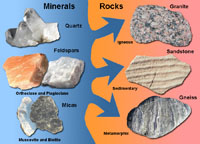 Fig. 1-88. Combinations of common minerals occur in different kinds of rocks. The kind of rock depends on the geologic setting where they form: igneous, sedimentary, or metamorphic. |
General Classification of Solid Earth MaterialsIgneous rocks are rock formed from molten materials. These include intrusive rocks (rocks cooled from molten material [magma] below the surface) and extrusive rocks formed on the Earth's surface by volcanism.Sediments are solid fragments of inorganic or organic material that come from the weathering of rock and soil erosion, and are carried and deposited by wind, water, or ice. Sedimentary rocks are rocks that formed through the deposition and solidification of sediment, especially sediment transported by water (rivers, lakes, and oceans), ice ( glaciers), and wind. Sedimentary rocks are often deposited in layers, and frequently contain fossils. Metamorphic rocks are rocks that were once one form of rock but has changed to another under the influence of heat, pressure, or fluids without passing through a liquid phase (melting). |
Igneous Rocks• The term igneous applies to rocks or minerals that have solidified from molten material. Igneous Rocks of all geologic ages are found around the planet. Figure 1-93 shows the location of active volcanic regions (shown in red) and regions with ancient igneous rocks (show in various colors representing different geologic ages when they formed). The processes that form volcanoes have been extensively studied. For instance, research show that the ancient igneous rocks found in California's Sierra Nevada Range (such as those exposed in Yosemite National Park, Figure 1-94) formed in the same manner of the rocks forming beneath the modern Cascade Range in the Pacific Northwest region (northern California to Washington). |
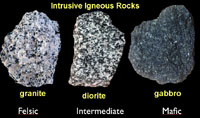 Fig. 1-89. Intrusive (plutonic) igneous rocks |
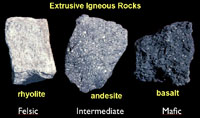 Fig. 1-90. Extrusive (volcanic) igneous rocks. |
 Fig. 1-91. Basalt volcano: Pu'u'o'o volcano on Hawaii's Big Island. |
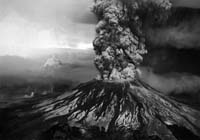 Fig. 1-92. Andesite volcano: Mount St. Helens in the Cascade Range, Washington. |
|
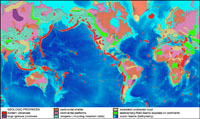 Fig. 1-93. Igneous regions of the world. Red is active regions, other colors are ancient igneous regions. |
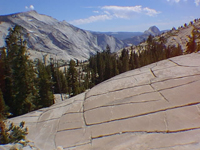 Fig. 1-94. Granites exposed in core of Sierra Nevada Range. |
Sediments and Sedimentary RocksSediments are solid material that has settled from a state of suspension in a fluid (water, ice, or wind).• Sediments are derived from weathering and erosion of pre-existing rocks. • Sediments and sedimentary rocks can help tell the geologic history of an area. • Sedimentary deposits are classified by grain size and source. • Sedimentary deposits may contain fossils. • When lithified (consolidated or cemented) sediments becomes a sedimentary rock. Figure 1-95 illustrates common sedimentary rocks. Sediments and sedimentary rocks cover much of the seafloor around the world. Chapter 6 covers the character and origin of marine sediments. Most sedimentary rocks observed on land were originally deposited in ocean settings, along coastlines, or in shallow seaways that flooded onto the continents in the past. Sedimentary deposits and the fossils they contain have been important sources of information for resolving questions about Earth history and climate change. |
 Fig. 1-95. Common sedimentary rocks include conglomerate, sandstone, shale, limestone, gypsum, and marl. |
Metamorphic Rocks• Metamorphic rocks are formed by “changing” pre-existing igneous, sedimentary or other metamorphic rocks.* Metamorphic processes involve changes caused by exposure to heat, pressure, and chemically-active fluids. • Driving forces are increased heat and pressure as rocks are buried deep into the earth in association with mountain-building periods. • They typically develop a fabric or texture that differentiates it from the original rock it formed from (called a protolith). • Commonly found in ancient crustal rocks exposed in mountain ranges and in the core of continental landmasses. Examples shown in Figure 1-96: quartzite, slate, marble, gneiss, schist, and serpentinite (the State Rock of California). |
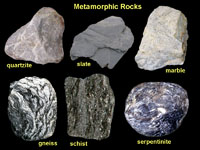 Fig. 1-96. Common metamorphic rocks |
The Rock CycleThe rock cycle is a conceptual model of how earth materials form and change in the Earth’s crust over time (Figure 1-97). The rock cycle represents the series of events in which a rock of one type is converted to one or more other types and then back to the original type. Both products (rocks and sediments) and processes (such as melting, cooling, erosion, deposition, metamorphism, remelting) are part of this idealized cycle. The passage of geologic time is the essential component, although some processes are much faster than others. Note that all these types of processes are taking place simultaneously, but at different locations on and within the crust. It is important to note that rock cycle processes also occur on other rocky planets or moons, but rates may vary due to the presence (or lack of) atmospheric gases or fluids (including water) or availability of heat enough to melt rocks. |
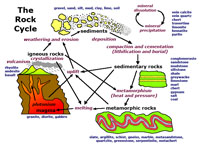 Fig. 1-97. The Rock Cycle is a conceptual model that portrays processes and products changing over time |
UniformitarianismThe concept of the rock cycle is attributed to a Scottish physician, James Hutton (1726-1797), who studied rocks and landscapes and coastlines throughout the British Isles. Hutton's concepts were later promoted in a book entitled Principles of Geology by the Scottish geologist Charles Lyell (the book was released in 3 volumes in 1830-1833). Hutton and Lyell are considered the founders of modern geology. Hutton also promoted the theory of uniformitarianism. Uniformitarianism emphasizes that all geologic phenomena may be explained as the result of existing forces having operated uniformly from the origin of the Earth to the present time. Uniformitarianism is commonly summarized: "The present is key to the past." Hutton fearlessly debated that the Earth was very old, measured in millions of years rather than thousands of years as promoted by the religion organizations of his times.Many scientists in Hutton's time promoted an alternative theory of catastrophism. Catastrophism is a theory that major changes in the Earth's crust result from catastrophes rather than evolutionary processes. The theory of catastrophism was more in line with religious doctrine common in the 17th and 18th centuries. It is interesting that today, uniformitarianism still applies to most geologic and landscape features, but discoveries have show that the Earth, or large regions of it, have experience great catastrophes, such as asteroid impacts, great earthquakes, collapse of continental shelves (causing massive underwater landslides and tsunamis), super storms, great floods, or volcanic events. However, these events can be scientifically viewed within the greater context of modern geology. Uniformitarianism explains how observable processes taking place over long periods of time can change the landscape. Examples include: |
Rock FormationsStratigraphy is a branch of geology concerned with the systematic study of bedded rock layers and their relations in time and the study of fossils and their locations in a sequence of bedded rocks. A stratum is a bed or layer of sedimentary rock having approximately the same composition throughout (plural is strata) An example of alternating layers of strata are shown in Figure 1-98. James Hutton also contributed to a theories about rock formations. A rock formation is the primary unit of stratigraphy, consisting of a succession of strata useful for mapping or description. A rock formation typically consists of a unique lithology (rock type) that has a relatively defined geologic age and is considered mappable (occurs throughout area or region, both on the surface and in the subsurface). An example of rock formations is shown in Figure 1-99.Rock formations preserved information about what conditions were like when the original sediments were deposited, such as on a river delta, a coastal beach environment, a ocean setting, or a massive dune field. Rock formations can also consist of igneous rocks, such as ancient lava flows or massive volcanic ash deposits. Rock formations typically represent materials that accumulated over period of hundreds of thousands, to many millions of years. |
 Fig. 1-98. Strata exposed along a reservoir shoreline. Each layer represents sediments deposited under unique environmental conditions over a period of time (days, years, centuries). |
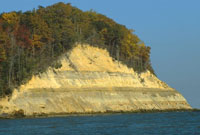 Fig. 1-99. Layers of sedimentary rock formations of the Cenozoic Era age are exposed in many locations US coastlines. These are Calvert Cliffs on Chesapeake Bay, Maryland. |
Methods For Determining the Age of Earth Materials and FeaturesGeochronology, the branch of earth sciences concerned with determining the age of earth materials and events through geologic time.How do geoscientists determine the age of rocks or fossils? How do they figure out how long ago and in what order did geologic processes or events take place? For instance how do they know how often a volcano erupts or how often earthquakes take place. Geologists now have many ways to determine the age of materials using absolute and relative dating methods. Absolute and Relative Dating MethodsAbsolute dating is a general term applied to a range of techniques that provide estimates of the age of objects, materials, or sites in real calendar years either directly or through a process of calibration with material of known age. There are many methods of absolute dating rocks or other ancient materials. The methods of absolute dating used depends on whether suitable samples are available for testing.Relative dating is the science of determining the relative order of past events, without necessarily determining their absolute age (see below). |
Decay of Radioactive Isotopes Used For Absolute DatingUnstable isotopes emit particles and energy in a process known as radioactive decay. A parent isotope is an unstable radioactive isotope. A daughter product isotope results from the decay of a parent.Radioactive decay occurs at known rates and using this you can determine the age of certain types of rocks. Dating of materials that contain naturally-occurring radioactive isotopes is possible because the rates of decay are known. The radiation decay clock starts the moment a mineral in a rock forms (or for 14C when an organism dies). A half-life is the time required for one-half (50%) of the parent to change to daughter product. The next half-life is when only a quarter of the original parent radionuclide remains, and so on. Age determinations can be determined by comparing the ratio of the parent and daughter isotope in a new (fresh) sample with the percentage in the old sample material being tested (Figure 1-100).
Sources of error in Absolute dating. Error can be caused by a variety of misinterpretation. Do we have a general good idea of the geologic history of the sample? (See Relative Dating below). Factors include: The sample has been within a closed system, meaning no parent or daughter atoms have entered or the sample. This is best assured by using fresh, unweathered rock samples. • The decay rate of radioactive elements trapped in mineral crystals is constant over geologic time. Not all rocks can be dated by radiometric methods: • Detrital sedimentary particles are not the same age as the rock in which they formed. • Metamorphic rock age may not necessarily represent the time when the rock formed. • Date-able materials (such as volcanic ash beds and igneous intrusions) are often used to bracket ages. • Date-able volcanic layers above and below sedimentary layers can be used to bracket the age of the sedimentary deposits. |
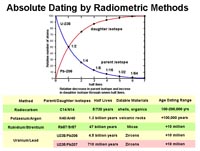 Fig. 1-100. Absolute dating methods. Different isotopes are used to study different materials and geologic time ranges.  Fig. 1-101. Nuclear bomb testing release large quantities of radionuclides into the global environment. Atmospheric and oceanic nuclear testing began with the first test on July 16, 1945 (Trinity Site in New Mexico). Most atmospheric testing ended in 1980, but (sadly) still continues underground. |
||||||||||||||||||
Radiocarbon DatingRadiocarbon dating is one of the most used method of absolute dating because of its useful dating window encompassing the past 100,000 years (it is especially useful for studying archaeological features and young sedimentary deposits). Figure 1-102 illustrates the radiocarbon absolute dating method. 14C (isotope carbon -14) is a unstable radioactive isotope (radionuclide). Radiocarbon dating (using ratios of the isotopes of radioactive isotope 14C to stable isotopes 12C and 13C derived from buried or isolated organic or carbonate materials. The half life of 14C [unstable isotope carbon-14] is about 5,730 years. Radiocarbon dating has extensively used in archaeological investigation and the study of climate change over the last several hundred thousand years, and precision methods now available make radiocarbon dating highly reliable. Radiocarbon dating is highly effective for extracting ages of organic materials (bone, tissues, wood, etc.) that have been isolated by burial and is effective for dating materials materials from ancient human activities going back for many thousands of years. |
 Fig. 1-102. The science behind the radiocarbon absolute dating method. |
Relative DatingRelative dating is the science of determining the relative order of past events, without necessarily determining their absolute age (see above). Relative dating involved the study of fossils and the correlation or comparison of fossils of similar ages but from different regions where their age is known. Microfossils derived from sediments and cores from wells help in the subsurface exploration for oil and gas.Relative dating is useful and relatively easy compared with absolute dating • Not all rocks can be dated with radioactivity (see above). • This is the way we tell the ages of rock layers relative to each other. Basic Geologic Principles Used For Relative DatingThese basic principles are easily observed in geologic outcrops, but have value for any number of scientific and technical applications beyond geology. Figure 1-103 and 1-104 illustrates the four laws that are used in resolving the age of rocks and the order in which they formed or geologic events occurred. The three laws are as follows:Law of Original Horizontality—this law states that most sediments, when originally formed, were generally laid down horizontally. However, many layered rocks are no longer horizontal. Law of Superposition—this law states that in any undisturbed sequence of rocks deposited in layers, and the oldest on bottom the youngest layer is on top. Each layer being younger than the one beneath it and older than the one above it. Law of Cross-Cutting Relationships—this law states that a body of igneous rock (an intrusion), a fault, or other geologic feature must be younger than any rock across which it cuts through. Law of Inclusions • An inclusion is a piece of rock within another rock. • The rock containing the inclusion is younger. |
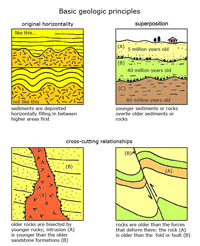 Fig. 1-103. Basic geologic principles illustrated. 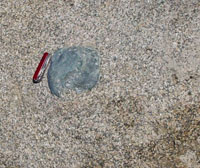 Fig.1-104. Example of a basalt inclusion in granite. The granite is younger than the basalt. |
Unconformities: Gaps in the Geologic RecordFollowing on the Law of Original Horizontality and Law of Superposition, both Hutton and Lyell recognized erosional boundaries preserved between rock layers that represent gaps in the geologic record. They named these gaps unconformities. An unconformity is a surface between successive strata that represents a missing interval in the geologic record of time, and produced either by: a) an interruption in deposition, or b) by the erosion of depositionally continuous strata followed by renewed deposition.It should be noted that the unconformable gaps in the geologic record in one region may be represented by sedimentary deposits in another region. Through time, geologists and paleontologists have been able to correlate rock formations and associated unconformities across large regions and even across oceans to other continents. Research over the past two centuries have provided information that fill in many of the gaps, making a more complete history of the geologic record. Several types of unconformable boundaries are recognized (Figure 1-105):
Figures 1-107 shows rock formation exposed in the Grand Canyon of Arizona. The different colored layers are rock formations of different ages, with the oldest at the bottom, youngest on top. Figure 1-108 is a block diagram showing the names of rock formations and the different kind of unconformities exposed in the Grand Canyon. |
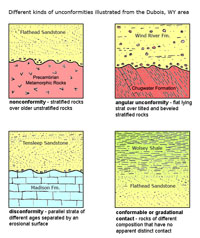 Fig. 1-105. Types of unconformities (boundaries between layered rocks).  Fig. 106. Layered sedimentary rocks in a sea cliff in Encinitas, CA showing an angular unconformity (evidence of a gap in the geologic record). |
|
How Do Unconformities Form?Unconformities are caused by relative changes in sea level over time. Wave erosion wears away materials exposed along coastlines, scouring surfaces smooth. On scales of thousands to millions of years, shorelines may move across entire regions. Erosion strips away materials exposed to waves and currents. New (younger) material can be deposited on the scoured surface. Shallow seas may flood in and then withdrawal repeatedly. Long-lasting transgressions can erode away entire mountain ranges with enough time.A transgression occurs when a shoreline migrates landward as sea level (or lake level) rises. A regression occurs when a shoreline migrates seaward as sea level (or lake level) falls (Figure 3-111). Sea level changes may be caused by region uplift or global changes in sea level, such at the formation or melting of continental glaciers. Whatever the cause of sea level change, when sea level falls, sediments are eroded from exposed land. When sea level rises, sediments are typically deposited in quiet water settings, such as on shallow continental shelves or in low, swampy areas on coastal plains. Some unconformities represent great gaps in time. For example, the Great Unconformity in the lower Grand Canyon illustrates where a great mountain range existed in the region during Precambrian before erosion completely stripped the landscape away back down, eventually allowing seas to flood over the region again in Cambrian time (see the angular unconformity below the Tapeats Formation in Figure 1-108). The gap in the geologic record in some locations along the Great Unconformity represents billions of years. |
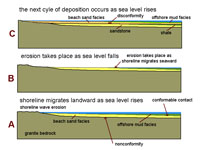 Figure 3-111. Unconformities can form by the rise and fall of sea level. Erosion strips away materials exposed to waves and currents. A rise in sea level causes a transgression which creates space underwater for sediments to be deposited. New (younger) material is deposited on the scoured surface. When sea level falls it causes a regression, and sediments are not deposited or are eroded away. |
||
| Chapter 1 quiz questions |


